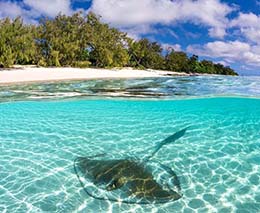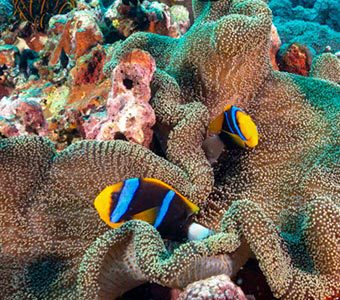Mention the Great Barrier Reef, and most people will immediately think of Cairns. However, the Great Barrier Reef in Queensland, Australia, stretches for thousands of kilometres, and there’s no shortage of dive base destinations. Nestled between Bundaberg and Rockhampton lies the Southern Great Barrier Reef, the official start of this delicate ecosystem.
The Southern Great Barrier Reef is quickly earning a reputation as one of the most unique and exciting ways to experience the Reef. This area is the gateway to two exquisite cays, Lady Elliot and Lady Musgrave Island, and is a stone’s throw from pristine Heron Island. The recent addition of a new shipwreck off the coast of Bundaberg, the Ex-HMAS Tobruk wreck, provides another reason to pay a visit to this part of Queensland.
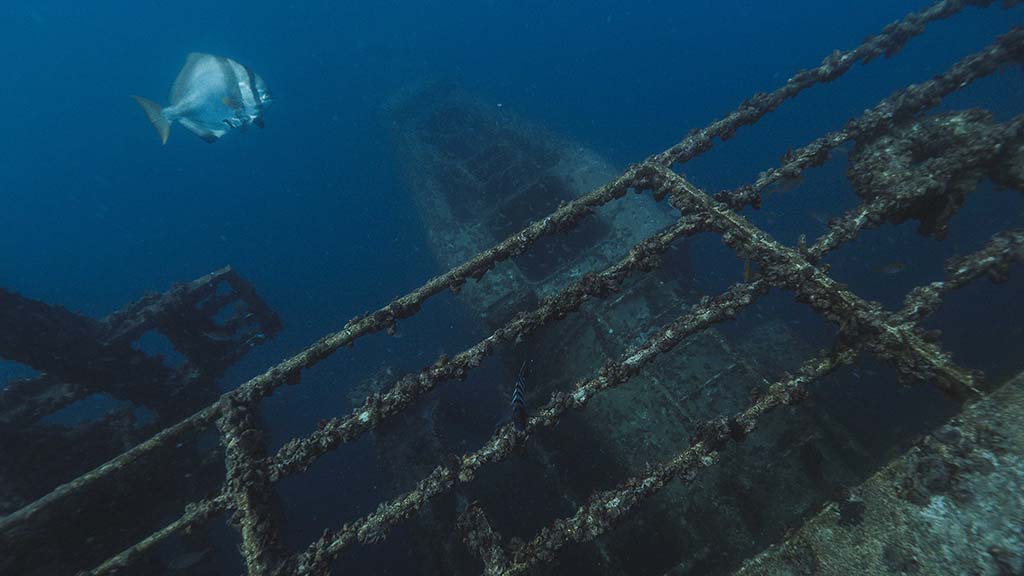
The Ex-H.M.A.S Tobruk is a 127-metre long navy vessel that was in operation for 34 years. In that time, she made the equivalent of 40 trips around the world on 26 major missions in destinations such as the Middle East, Fiji and the Solomon Islands. The Tobruk was decommissioned in 2015 and scuttled 15 nautical miles off the coast of Bundaberg in 2018.
During scuttling, the hydraulic pumps failed on one side of the vessel, causing the Tobruk to tip over onto her side. Although the sinking of the Tobruk did not go according to plan, the unintended position of the boat on the ocean floor now adds to the dive experience. The ship rests 30 metres below the ocean’s surface, but her portside hangs in just 12 metres of water allowing open water divers access to the shipwreck. Advanced divers have the opportunity to descend a little deeper and access the wreck itself.
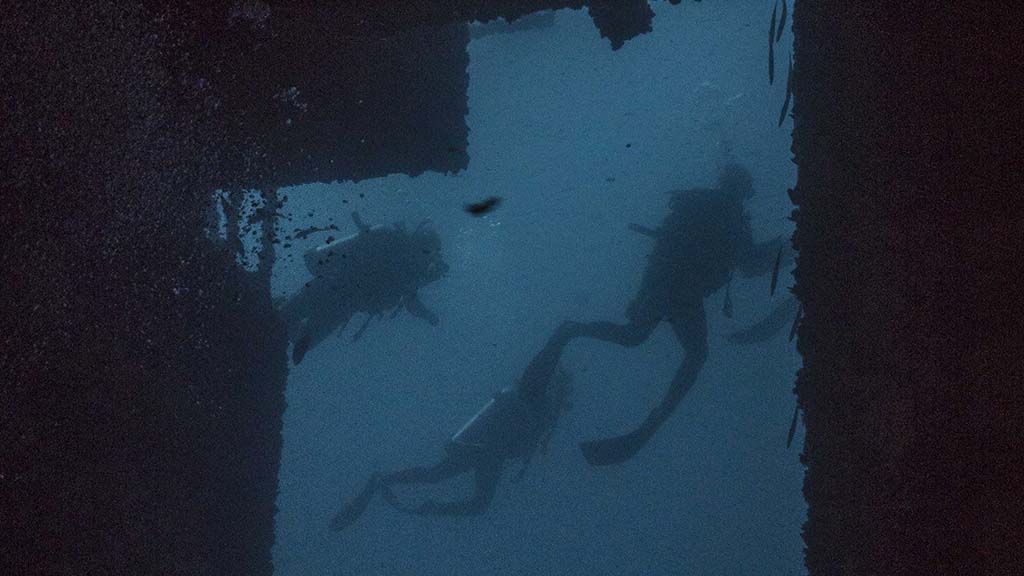
When in service, HMAS Tobruk could carry 3 helicopters, 18 leopard tanks, 40 armoured personnel carriers, up to 520 soldiers and 130 personnel. The vehicles rolled on and off the boat through a large set of doors into a cavernous space that now provides an exciting opportunity for underwater exploration.
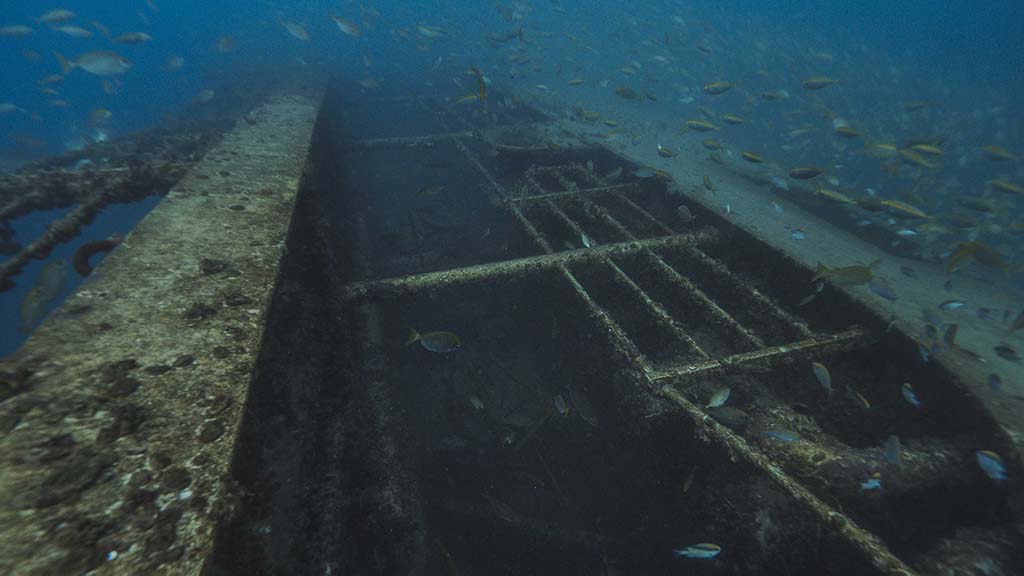
We arranged two dives on the ex-HMAS Tobruk wreck with Lady Musgrave Experience, an operator based in Bundaberg that also offers full-day trips to the spectacular Lady Musgrave Island. After a one-hour journey aboard the fast catamaran ‘Main Event’ we arrived at the Tobruk’s final resting place, geared up, jumped in, and descended down the mooring line towards the wreck. The water was around 21 degrees, and I was grateful for the hood on my 5mm wetsuit. As we continued down the line, the hulking shape of the wreck began to appear from the murky deep.
The first dive was an initial orientation of the wreck, and we covered her entire length before actually heading inside on our second dive. The wreck is already covered in growth and teeming with life., and huge schools of batfish and Spanish mackerel patrol the deck. The skeleton of the Tobruk provides the perfect foundation for a coral reef to grow, while the depth of the wreck means that divers have the chance to spot bigger marine life swimming past.
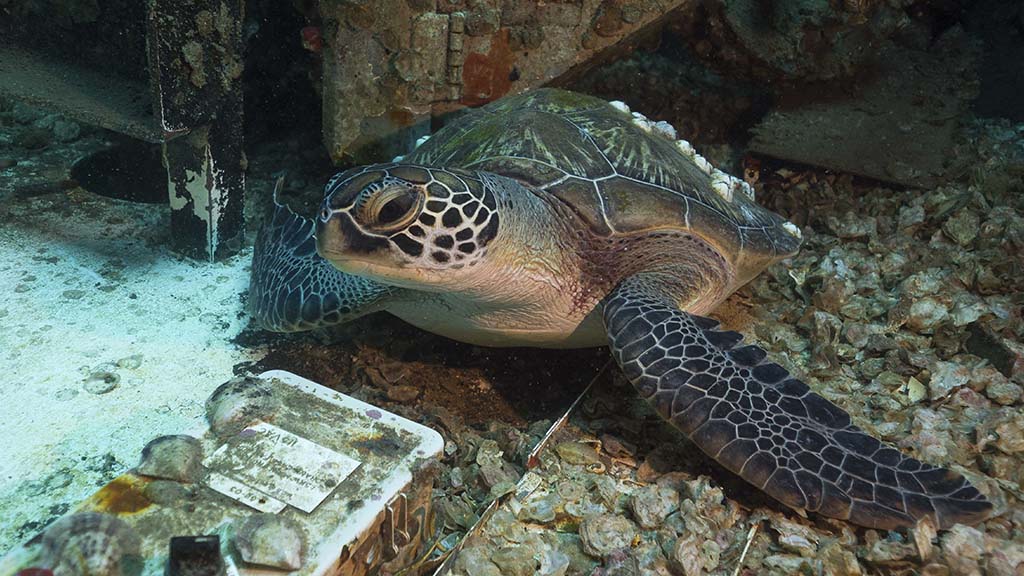
After an hour’s surface interval, it’s time to head back underwater and explore the inside of the Tobruk. A green turtle, affectionately named ‘Brookie’ by the team from Lady Musgrave Experience, now calls the Tobruk home. Brookie often approaches divers, swimming right up and rubbing her shell along their wetsuit. Before heading inside, we spotted Brookie resting in a nook on the top deck of the ship. As we swam closer to get a better look, Brookie swayed in the current but stayed put, comfortable with our close proximity.
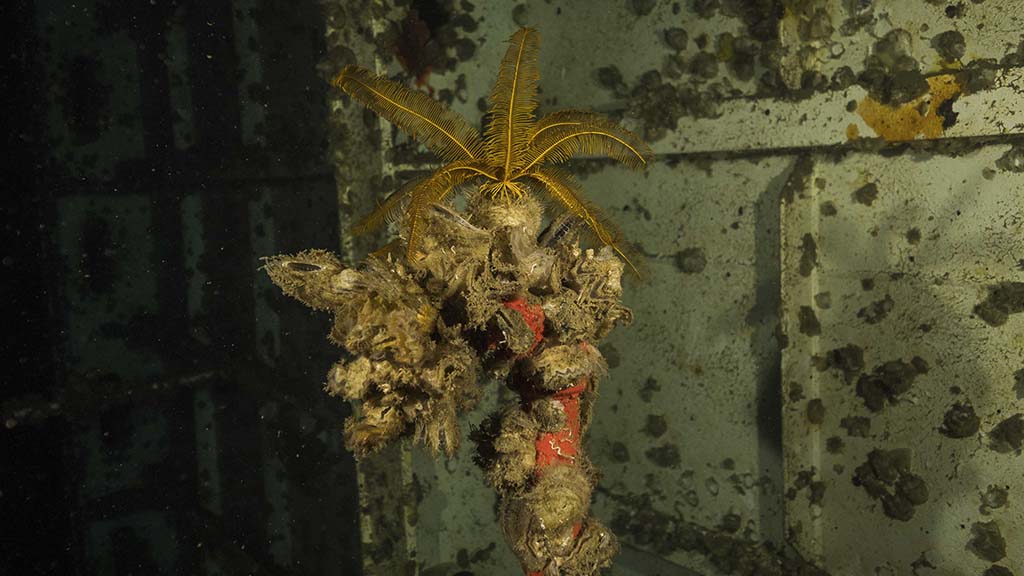
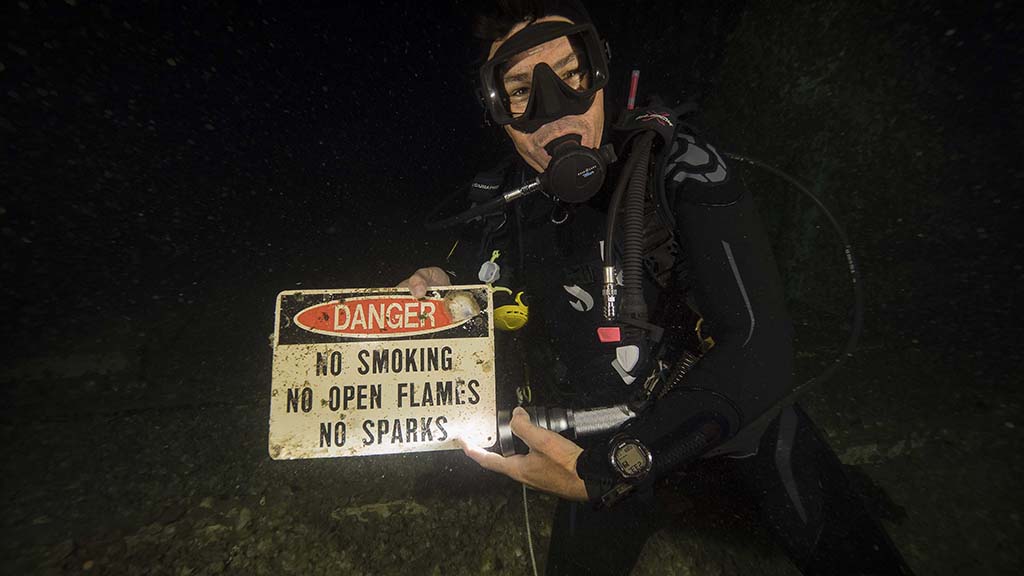
We were enveloped in darkness as we entered the belly of the wreck. Our torches lit up the rusting signage and the silt-covered floor, giving the swim through the Tobruk a slightly eerie feel. As we made our way deeper into the wreck, the water appeared bright blue through the large openings in the dark interior of the ship, like light streaming through cathedral windows. We ended the dive on the top deck of the Tobruk, with schools of fish darting around in the current and a sea turtle leisurely swimming past.
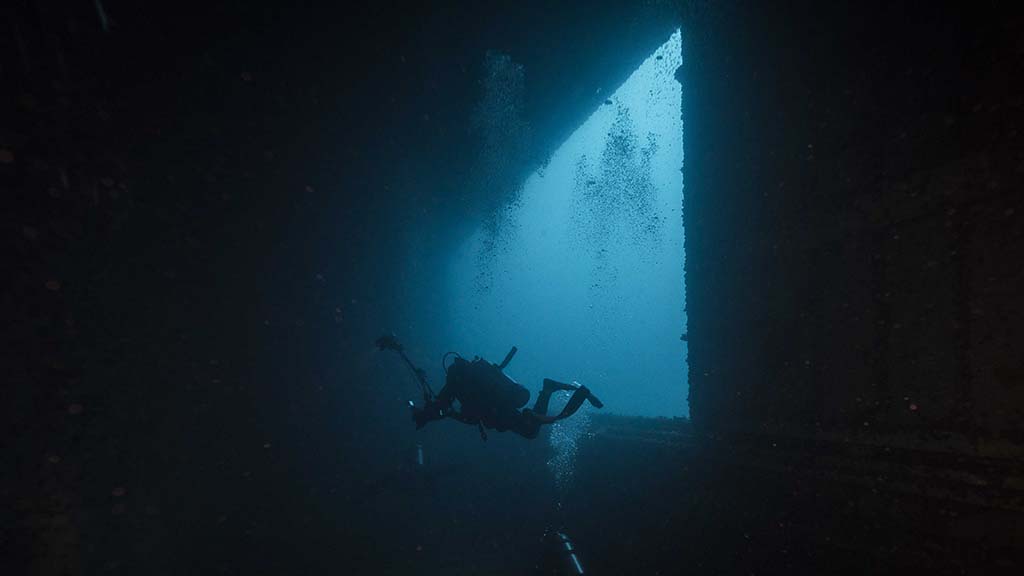
The Ex-HMAS Tobruk wreck is a dive that will challenge and excite both long-time wreck enthusiasts and the more casual divers among us. It is yet another reason a trip to the Southern Great Barrier Reef needs to be on your #divebucketlist.
Harriet Spark is a dive instructor turned graphic designer and videographer, and founder of Grumpy Turtle Design. Passionate about conservation through creative communication, you’ll find her either underwater or above sea level, designing for change. You can follow Harriet’s adventures on Instagram.


